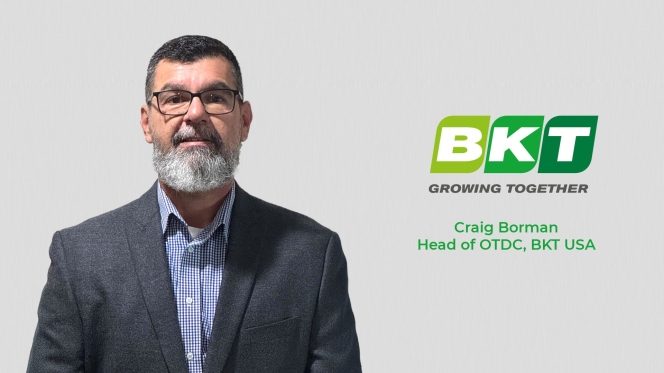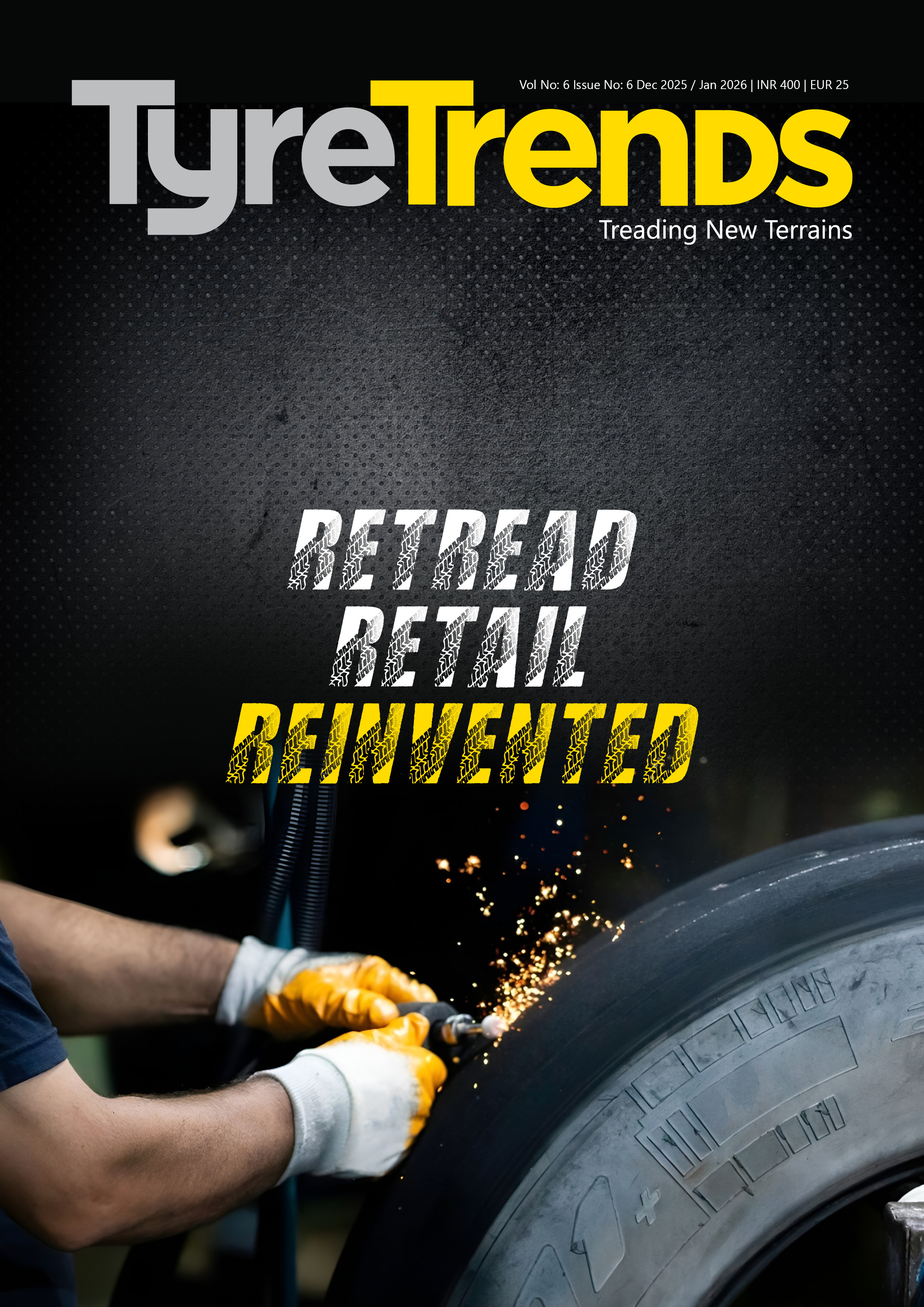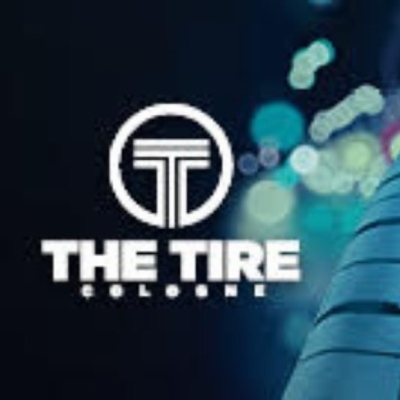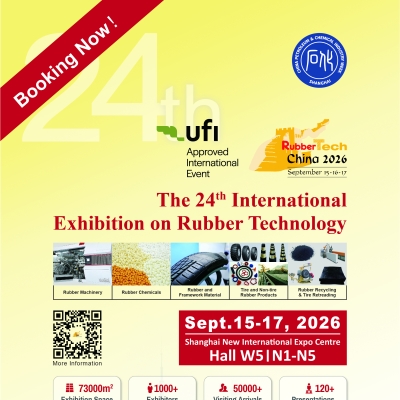The 15th Asia Pacific Carbon Black Conference Concludes With Record-Breaking Attendance!
- By Gaurav Nandi
- December 03, 2024
The Asia Pacific Carbon Black Conference 2024 – Perspectives in Asia Pacific, one of the largest and most acknowledged global carbon black industry events, unfolded in Kolkata, India, marking a historic moment for the city. The 15th edition welcomed a record-breaking 252 delegates and featured compelling discussions on the future of the carbon black market, which is projected to reach USD 30.15 billion by 2029. Over three days, industry leaders explored key trends, sustainability efforts and technological innovations, underscoring the sector’s dynamic evolution and the growing importance of India in shaping its future.
The sprawling banquet of a renowned hotel in the City of Joy was attuned to the murmuring of delegates from across the globe when the speaker on the dais invited the International Advisory Committee Chairman Amit Choudhary to address the crowd. With utter excitement, the chairman ascended the stage and opened the 15th Asia Pacific Carbon Black Conference doors to the curious assembly. Over the next three days, the event featured – workshops, intriguing sessions and panel discussions on the global carbon black market, which is slated to reach USD 30.15 Billion by 2029, according to Mordor Intelligence.

From sessions on the latest trends within the space to the use of recovered carbon black and sustainability issues, the conference was a boiling cauldron of information, coupled with an exhibition spanning different makers and associated suppliers to the industry.
Speaking to Tyre Trends exclusively, Choudhary said, “Key takeaways from the conference were impactful for both participants and delegates, with a record-breaking 252 attendees from around the globe. The exhibition, featuring 36 stalls, marked the largest in the Asia-Pacific region in the event’s 31-year history. The conference kicked off with two workshops on day one, focusing on the technical aspects of carbon black and its applications across the tyre and other industries. About 70 attendees engaged in a robust discussion, addressing numerous technical queries from leading players in the carbon black industry, including Birla Carbon, Tokai Carbon, Himadri Speciality Chemical Ltd, Epsilon, PCBL, and so on.”

He added, “For the first time in its history, the conference featured panel discussions on different topics of the carbon black industry covering marketing, raw materials, application, technology and the future of carbon black, which fostered intense engagement from participants. These sessions provided valuable insights and sparked in-depth discussions, impacting all those who attended.”
Many companies attending the conference were not direct carbon black producers but played key roles in the carbon value chain, either as suppliers to the carbon black industry or as technological collaborators or customers. This diverse representation highlighted the industry’s interconnected nature, with attendees gaining exposure to the latest technologies and processes shaping the sector.
“The conference brought together a global audience, fostering collaboration and providing significant opportunities for local suppliers to engage with emerging technologies. Carbon black production in this region, particularly in India, is experiencing rapid growth.
Companies across the country, from Gujarat and Maharashtra in the west to the east and south, are expanding their operations to meet increasing demand. This growth presents ample opportunities for suppliers of essential equipment and consumables to the carbon black industry, such as refractory manufacturers, bag suppliers and packing material providers. Ultimately, the entire supply chain stands to benefit from the increased collaboration and knowledge exchange fostered at the conference,” averred Choudhary.

Quick view
George Haines, Global Product Director and Avijit Sasmal, Chief Sustainability Officer at Himadri Speciality Chemical Limited, highlighted the carbon black industry’s progress in sustainability and circularity. They emphasised advancements such as the use of recycled pyrolysis oil and reclaimed carbon black and achievements like EcoVadis and ISCC+ certifications. Himadri already achieved the milestones and is maintaining Zero Liquid Discharge (ZLD) across plants. Innovations like LFP Cathode Active Material for EV batteries and renewable energy showcased Himadri’s future readiness. This session set a benchmark for aligning industry practices with global climate goals.
Senior Manager - Technology, K. Arun Kumar, and Manager, Technology and Business Development, Dr. P.M. Sivaram, at CUMI Super Refractories, discussed enhancing reactor life in the carbon black industry through condition monitoring and refractory solutions. They emphasised the need for failure analysis, material characterisation, and data-driven strategies to predict failures, improve productivity, and reduce downtime, ultimately leading to more efficient and sustainable operations in the industry.
The workshop by Himadri Speciality Chemicals Limited Plant Head Kingshuk Bose, on ‘Recent Advancements in Carbon Black Technologies’ provided an overview of carbon black, its applications, and recent technological innovations in its manufacturing processes. He discussed new technologies such as plasma and nanotechnology, which enhance production efficiency and product characteristics. Additionally, AI and machine learning were highlighted to optimise processes, improve quality and predict maintenance needs, ultimately advancing carbon black manufacturing and packaging strategies.

The former Chief Advisor of Research and Development at Apollo Tyres, P K Mohamed, an industry stalwart, addressed the future of the tyre industry, focusing on advancements in carbon black technology in his key note address. He noted that pneumatic tyres, essential for load support, require optimal structures to endure operational pressures. The industry faced megatrends such as mobility, digitisation, electrification, and the shift toward renewable materials. Key customer expectations centre on rolling resistance, traction, durability, and sustainability improvements. Enhancements in carbon black properties, including particle size and surface chemistry, are vital for achieving these goals. The industry’s evolution towards higher sigma levels indicated a commitment to quality and performance, necessitating collaborative efforts in research and development to meet future demands.
Notch Consulting Inc. Founder and President Paul Ita spoke on the outlook for 2024 and highlighted significant developments in the global carbon black and tyre industries. He noted a projected total investment of INR 27.3 billion in new tyre capacity from 2023 to 2028, with Asia, especially China and India, leading in new projects. He also discussed the impacts of EU sanctions on Russian carbon black imports. These sanctions are shifting trade flows, with India emerging as a key supplier to replace Russian volumes. The analysis included production capacity and utilisation trends with a forecast for growth in carbon black production despite current disruptions.
The AGM Strategy at Epsilon Carbon, Sagar Mathur, noted that geopolitical shifts, rapid urbanisation, climate change, sustainability, and technological advancements are shaping the future of the carbon black industry. Key trends included the growing demand for Electric Vehicle (EV) tyres, increased focus on circularity and recycling technologies, and the need for advanced speciality products. He highlighted that urbanisation is expected to strain resources while geopolitical conflicts are reshaping supply chains. The industry must adapt to these changes while addressing environmental concerns, leading to new product development, particularly in sustainable materials.

Vice President of Sales and Marketing (CBD), Kane Hanneke and Vice President of Business Development and Sales (CBD), Surge Klunder, at Himadri Specialty Chemical Ltd, focused on the current demand and supply dynamics of carbon black in North America and the European Union as of October 2024. In their presentations, they highlighted key economic indicators such as GDP growth, inflation, and the Manufacturing Purchasing Managers’ Index (PMI), while discussing challenges faced by domestic producers, including import duties, geopolitical tensions, and rising oil costs. Kane also mentioned a notable production increase among leading carbon black producers, particularly in China and India, and addressed the impact of new tariffs on Mexican imports.
Executive Vice-President and Regional Head of Sales and Marketing at Birla Carbon, Shashank Awasthi, discussed the dynamics of the carbon black market in Asia and Europe with a focus on growth plans and regional capacities. He highlighted that China dominates the market with a capacity share of 47 percent and a demand share of 37 percent. He also covered competition in India, where local producers faced challenges from imports, particularly from China, Korea, and Russia. His analysis indicated a projected CAGR of 5 percent for the Southeast Asia carbon black market from 2022 to 2027, driven by rising disposable incomes. It increased automotive production, with Asia accounting for approximately 60 percent of global automobile manufacturing.
The presentation by Zircoa Managing Director Thomas Bohm focused on the role of zirconia refractories in enhancing reactor performance during carbon black production. Zirconia, a unique ceramic material, offers exceptional properties such as high thermal resistance, lower thermal conductivity, and erosion resistance, making it suitable for high-temperature applications in reactors. The advantages of zirconia include increased reactor efficiency, improved product yields, and the ability to withstand aggressive process gases. However, challenges such as degradation from thermal shock and alkali attacks were noted, emphasising the importance of proper alignment and operational practices to maximise the lifespan of zirconia linings.
In his virtual keynote session, Zhu Zilong, deputy director of design at Doright, discussed the emerging supply trends in equipment manufacturing, particularly focusing on the shift from individual equipment supply to comprehensive equipment packages.
The landmark event saw the attendance of dignitaries and industry stalwarts, including the Chief Secretary to the Government of West Bengal, Dr Manoj Pant, Himadri Speciality Managing Director Anurag Choudhary, Tokai Carbon President Hagime Hagasaka, Group Country Head, Aditya Birla Group Thailand, and Chief Expansion Officer Birla Carbon Asia, Sanjeev Sood, among others.
Key Speakers included Aditya Birla Group’s Chief Sustainability Officer Deeksha Vats, Former President at ALSTOM Power Energy Recovery CP Natarajan, Vidhitech Solutions Founder Vinod Taneja, ABG Trading President John Kennelly, Senior Manager Research and Development of Compound Development at CEAT Limited Dr Pranab Dey, Head - Projects Business at Thermax Limited Naveen Sadhu and Rathi Group Director Ravi Rathi among others.
The event was attended by delegates from leading carbon black producers, such as Thai Tokai Carbon Product Company Limited, Hyundai OCI, Aegean First Company, Zircoa Inc., Phillips Carbon Black Limited, CITGO Corp and others.
Curtain Call
Amit Choudhary commented about the conference, “Conferences like this serve as crucial platforms for advancing technological progress in the industry. They provide insights into global trends, revealing which players are exploring new technologies and how different governments are approaching industry expectations. These events create an opportunity for stakeholders to understand evolving needs as well as the requirements of end customers.”
He added, “For instance, during our recent conference, several customers presented compelling insights, with both in-person and online interactions offering a deeper understanding of the tyre industry’s future. The rise of EVs is a key development demanding a shift in tyre technology and manufacturing processes. Current tyres are general-purpose, but as EV adoption accelerates, specialised tyres will become necessary. In the near future, we will see the emergence of EV-specific tyres alongside innovations in related non-tyre markets.”
He also noted that India, with its significant market share, is poised for substantial growth. Established markets in the US and Europe are facing challenges with plant closures and shifting demands. The ongoing geopolitical landscape, including tensions in China and Russia, is influencing market dynamics. However, India remains in a favourable position for investment and is set to experience impressive growth in the sector.
Looking ahead, the next conference is set to take place in 2026.
GRI Tyre Wins Sustainability And Innovation Honours At Automechanika Dubai
- By TT News
- December 23, 2025
ULTIMATE GREEN XT tyre has won two awards at the Awards, receiving Sustainable Product of the Year and being Highly Commended in the Innovative Product of the Year category.
The awards were presented last week in Dubai and add to earlier recognition for the product, which received the Best Innovation in Sustainability award at in Chicago earlier this year.
The Sustainable Product of the Year and Innovative Product of the Year categories recognise products that demonstrate environmental responsibility and technological innovation in the global automotive and mobility industry. The judges cited the tyre’s use of environmentally friendly materials and its reduced environmental impact.
The ULTIMATE GREEN XT, identified by its green colour, has been developed with a focus on sustainability while maintaining performance, durability and safety standards. The Sustainable Product of the Year award reflects its contribution to more sustainable mobility solutions, while the innovation commendation highlights its design and engineering approach.
Automechanika Dubai is the largest international trade fair for the automotive aftermarket across the Middle East, Africa and South Asia, bringing together manufacturers, suppliers and industry leaders. Recognition at the event underlines the international profile of the ULTIMATE GREEN XT following its earlier award in the United States.
Barry Guildford, global commercial director of GRI Tires, said, “This recognition at Automechanika Dubai is a proud milestone for GRI. The ULTIMATE GREEN XT reflects our vision of delivering innovative tire solutions that support sustainability while meeting the evolving needs of our customers worldwide.”
GRI said it would continue to invest in research and development aimed at advancing sustainable tyre technologies, following the continued recognition of the ULTIMATE GREEN XT in international markets.

The rollout of GST 2.0 marks a defining moment in India’s economic journey – a reform that may well prove even more consequential than the original introduction of the Goods and Services Tax. Especially for a sector like tyres, the recent reduction in (GST) on tyres is far more than just a change in numbers. It is a transformative step that touches every wheel turning on India’s roads – from a farmer’s tractor to a trucker’s long-haul trailer and from a commuter’s scooter to a construction vehicle powering the nation’s infrastructure.
For years, tyres were taxed at 28 percent – the highest GST slab, clubbed with luxury and demerit goods. This categorisation never truly reflected the essential role tyres play in our everyday lives. Tyres are not a luxury. They are a fundamental enabler of mobility, supporting the movement of people and goods across cities, towns and villages. By bringing GST rates on tyres down to a more rational level, the government has addressed a long-standing anomaly and set the stage for widespread benefits across the economy.
The most visible impact of this move will be felt on the ground – literally. Lower GST means more affordable tyres for all users. Especially for transporters and fleet operators, tyres account for a significant chunk of vehicle running costs. A reduction in tax translates into lower replacement costs, freeing up working capital and improving operational margins. Farmers, small traders, delivery personnel, service providers, transporters – every segment that relies on mobility will feel this relief.
India has been working hard to bring down logistics costs, which are believed to be about 13–14 percent of GDP – much higher than global benchmarks. Tyres have a direct bearing on vehicle operating efficiency, fuel consumption and maintenance schedules. When tyres become more affordable, operators can replace tyres on time, and run vehicles more efficiently.
This naturally leads to lower logistics costs. Reduced logistics costs ripple across the value chain, helping industries move goods faster and at lower cost. This aligns perfectly with India’s ambition to become a more globally competitive manufacturing and trading hub.
Tyre industry’s story is not just urban – it’s deeply rural as well. Tractor tyres, power tiller tyres and tyres for animal-drawn vehicles are integral to the agricultural economy. A reduction in GST brings meaningful relief to farmers and small cultivators who rely on these tyres for their daily operations. By easing this cost, the government has extended direct support to rural mobility and agricultural productivity – an often underappreciated but critical outcome of this reform.
One of the most powerful yet often overlooked impacts of this decision lies in road safety. Worn-out tyres are a major cause of road accidents, particularly on highways. High replacement costs often lead to tyres being used well past their safe life.
With lower GST making new tyres more accessible, both individual motorists and commercial fleet owners are more likely to replace tyres on time, keeping vehicles safer and reducing accident risks. This complements the government’s broader road safety agenda, making highways not just faster but safer for everyone.
For the Indian tyre industry, which is one of the largest in the world, this reform is a game changer. It creates a more balanced tax structure, supports better cash flow, improves compliance and strengthens the competitiveness of domestic manufacturers. It will also encourage investment and capacity expansion, enabling the industry to serve growing domestic demand and tap export opportunities more effectively.
The GST reduction on tyres is a strategic, forward-looking policy decision that will benefit the entire mobility ecosystem. It acknowledges the essential role tyres play – not just as a product, but as a critical enabler of transportation, logistics, rural livelihoods and road safety.
As this reform takes root, its positive impact will be felt by consumers, businesses, farmers and industries alike. The tyre industry, represented by ATMA, welcomes this move wholeheartedly and remains committed to working alongside the government to strengthen India’s journey towards affordable, efficient and safe mobility for all.
The author is Director General of the New Delhi-based tyre industry association, Automotive Tyre Manufacturers’ Association (ATMA).The views expressed here are personal.
WACKER Secures Gold Medal In EcoVadis Sustainability Rating
- By TT News
- December 18, 2025

WACKER has earned the 2025 Gold Medal from the independent rating agency EcoVadis, marking its continued recognition for sustainable practices and responsible corporate governance. This distinction places the company within the top five percent of all businesses assessed by EcoVadis (over 1,000 companies globally). WACKER's overall score improved from 77 points (in 2024) to 79 points, driven largely by enhanced reporting and concrete actions focused on Scope 3 emissions and ethical standards.
The EcoVadis assessment measures the quality of a company’s sustainability management through a methodology grounded in international frameworks like the Global Reporting Initiative, the UN Global Compact and ISO 26000. Performance is scored from 0 to 100 across four core areas: environment, labour and human rights, ethics and sustainable procurement, using 21 specific indicators.
In line with its commitment, WACKER provides its EcoVadis evaluation to customers as a standardised and credible validation of its sustainability efforts. The company has also defined ambitious climate targets, aiming to halve its absolute greenhouse gas emissions by 2030 relative to 2020 levels. Progress is already evident, with a 30 percent reduction achieved as of 2024. Looking further ahead, WACKER strives to reach net-zero emissions across its operations by the year 2045.
Peter Gigler, Head of Corporate ESG, WACKER, said, “The result confirms our initiatives in many key areas. It provides our customers with invaluable proof.”
Craig Borman Appointed As Head Of OTR At BKT USA
- By TT News
- December 18, 2025

Balkrishna Industries Ltd (BKT Tires), a global leader in off-highway tyre manufacturing, has appointed Craig Borman as Head of OTR at BKT USA. The appointment is in line with BKT’s long-term strategy through 2030.
Borman brings with him 20 years of experience across off-road equipment, tyres and rubber tracks. He will play a key role in leading BKT USA's OTR team and expanding the company's presence in this market while increasing awareness of the value and dependability of BKT's range of products.
Borman said, “I’m extremely excited to join the BKT family and to build off the successes that this team has already achieved. I look forward to engaging with our partners, determining how we can accelerate our mutual growth and working towards achieving BKT’s vision of being a recognised leader in the OTR segment.”







Comments (0)
ADD COMMENT